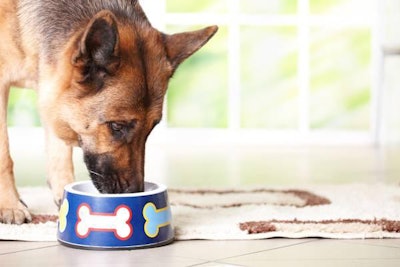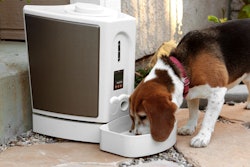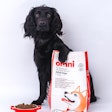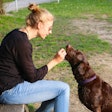
A recently published method for measuring dogs’ preferences for particular odors may help while developing new pet food products. The technique may allow pet food product developers to focus solely on how dogs respond to a substance’s smell. Researchers published a study in the Journal of Sensory Studies that detailed how they used a false-bottomed bowl to focus solely on a dogs’ odor preference.
False-bottomed bowl sensory analysis of dogs’ odor preferences
In the pet food sensory analysis technique, researchers divided a stainless steel bowl into two compartments, divided by a stainless steel plate. The plate was drilled with numerous holes to allow odors to pass through from a substance in the lower chamber. In the top chamber, researchers placed identical dog foods. Since the foods were identical, but the odors were different, the influence of the odor alone could be observed.
“The false-bottom bowls method is based on standard versus comparison tests,” said Cécile Petel, PhD, research project manager for Diana Pet Food and lead author of the paper. “Diana Pet Food started using this method since 2015 in order to test the impact of different types of odorant stimuli on dog’s preferences. The method was developed for research purpose and aims development of innovative palatability solutions.”
The false-bottomed bowl technique may offer advantages over previous methods.
“Palatability measured trough classical versus or monadic tests is a result of a multi-sensory meal experience,” she said. “Thus, classical palatability tests do not provide information about the importance of each sensory driver during consumption. For dogs, olfaction is of major interest and the new [false-bottomed bowl] method was developed to test, with no interaction with food matrix, the effect of odorant stimuli on dog’s choice and preferences. Indeed, the two products offered for consumption are identical and thus the impact of odorant stimuli placed above the food can be easily measured.”
However, the technique may not be more affordable than existing techniques.
“At least 30 dogs are enrolled in each test, so that enough validated data can be used to run relevant statistical analysis,” she said. “Moreover the [false-bottomed bowl] method may require more preparation than standard tests, as for each bowl the odorant stimuli has to be added."
That means the false-bottomed bowl technique may require similar amounts of preparation and economic resources to traditional methods, although it may allow more precise measurement of odorants' influence on dog food palatability.


















